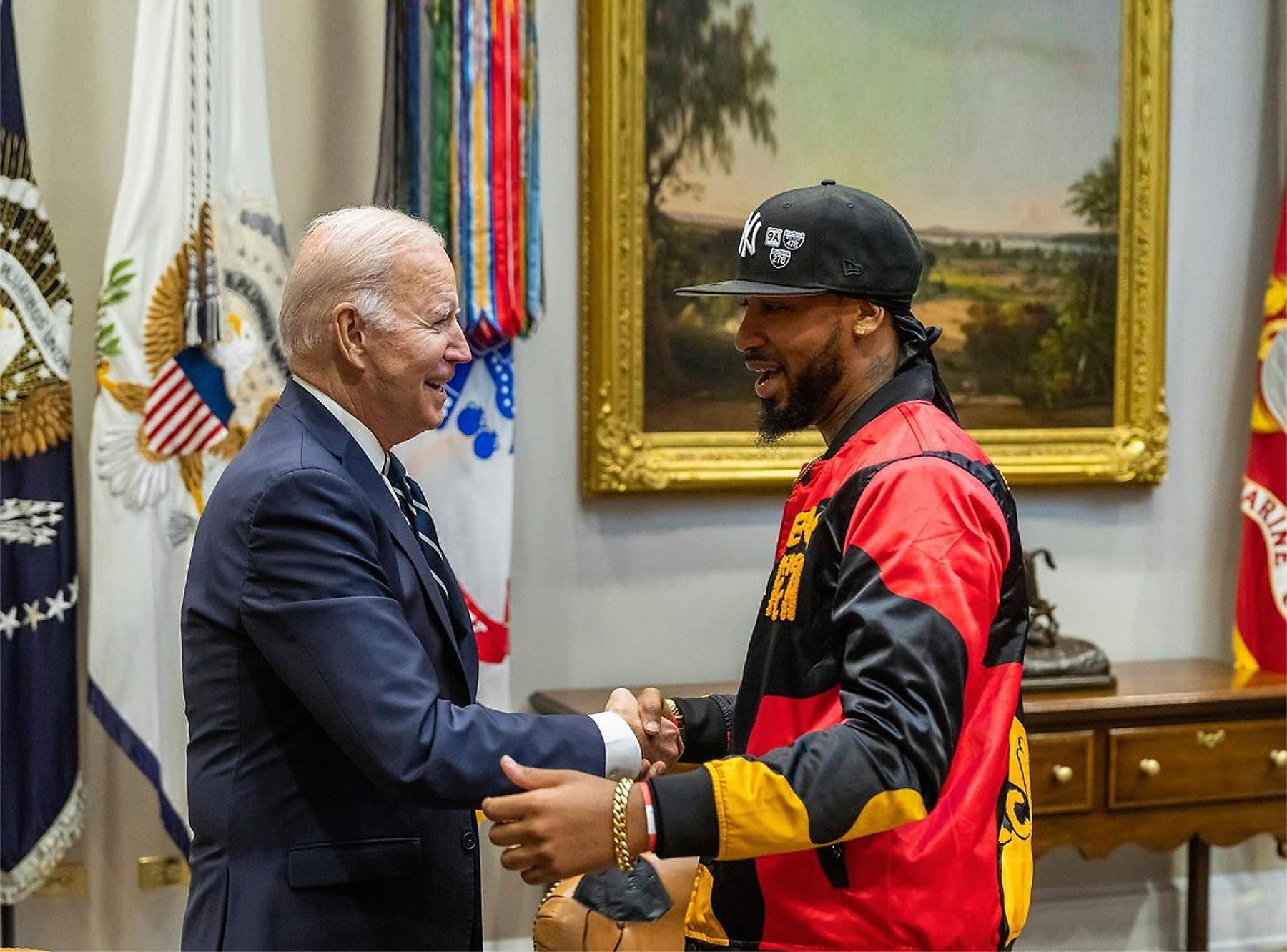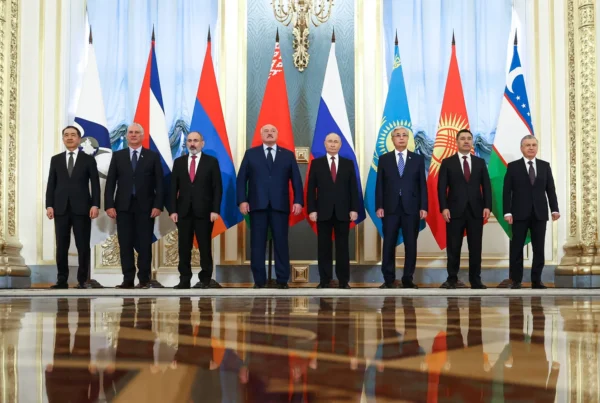The JFK8 Amazon warehouse on Staten Island, New York recently became the first officially recognized union at Amazon in the US. How were two inexperienced organizers able to take on the country’s second-largest employer, and why is it so hard to form unions in the US?
Shane O’Callaghan, 12 May 2022
The organized labor movement in the United States notched a significant victory when Amazon workers at the JFK8 warehouse on Staten Island, New York overcame all odds and voted to unionize (2,654 votes in favor; 2,131 against) on 1 April 2022. In doing so, the workers succeeded where others had failed and formed Amazon’s first US union officially recognized by the National Labor Relations Board (NLRB).
This successful unionization and the nearly 60 percent increase in union election petitions filed with the NLRB in the last six months suggests that the long-declining US labor movement may be gaining momentum. However, union membership in the US remains very low, and aspiring unions must overcome significant headwinds to succeed.
For former Amazon employee and President of the newly-formed Amazon Labor Union (ALU) Christian Smalls, the path to unionization was no walk in the park. Smalls was terminated from the JFK8 warehouse in March 2020 after organizing a walkout over what he viewed as inadequate COVID-19 safety protocols at the warehouse.
As a result, both Smalls and the state of New York filed unlawful termination lawsuits against Amazon. In addition to pursuing legal action after his firing, Smalls began organizing, and he created the workers’ advocacy group The Congress of Essential Workers (TCOEW).
Rather than going the traditional route of hiring outside labor organizers, Smalls and his friend still working at the JFK8 warehouse, Derrick Palmer, took on the herculean task of organizing a grassroots unionization campaign at Amazon. With the backing of Smalls’ new TCOEW, the two friends formed the ALU and raised USD 120,000 through crowdfunding. Smalls and Palmer added a more modern and personal touch to their organizing effort by utilizing TikTok videos to spread the word, singing songs with employees and offering homemade food and free marijuana at events.
Whether it was the free weed, Smalls’ and Palmer’s personal connections to the warehouse and its employees or just a general trend towards unionization, the two men were able to do what professional outside organizers had failed to do for years–take on Amazon and win.
As the second-largest employer in the US and a vehemently anti-union corporation, Amazon did not allow this to happen without a fight. According to filings with the US Department of Labor, Amazon spent USD 4.3 million on anti-union consultants in 2021 alone. Additionally, The Intercept reported that Amazon’s employee chat app has banned the use of words that could indicate dissatisfaction with working conditions, including “union,” “pay raise,” “living wage,” “plantation,” “restrooms,” and many more.
Unsurprisingly, the company began fighting Smalls’ efforts even before he was fired and had set his sights on unionizing. Smalls’ suggestion of a walkout to protest the company’s handling of COVID led to a full mobilization to extinguish any potential spark for organizing the warehouse. According to the New York Times, “Amazon formed a reaction team involving 10 departments, including its Global Intelligence Program, a security group staffed by many military veterans. The company named an ‘incident commander’ and relied on a ‘Protest Response Playbook’ and ‘Labor Activity Playbook’ to ward off ‘business disruptions.’”
When Smalls and Palmer later moved to form the union after Smalls’ firing, Amazon continued to oppose their efforts. Once the JFK8 warehouse reached enough signatures to petition the NLRB for an election, Amazon challenged the number of employees and the validity of some of the signatures, which resulted in the ALU withdrawing its petition. Undeterred by this setback, Smalls and Palmer collected more signatures, petitioned another vote and won by over 500 votes.
The ALU’s fight, however, is far from over as Amazon has challenged the result of the unionization vote in court, claiming that the union intimidated employees and exchanged marijuana for workers’ support. One NLRB official even suggested that there may be sufficient evidence to overturn the election. Last month’s historic labor vote to unionize an Amazon warehouse in New York City on Staten Island will likely face other legal challenges from Amazon and, even if the union survives, it must then navigate the difficult process of negotiating a contract.
Despite this monumental victory for the labor movement, union membership in the US is still rare, especially in the private sector. According to the Bureau of Labor Statistics, only seven percent of private-sector employees belonged to a union in 2021. That number increases to 37.6 percent in the public sector, but these are both a slight decline from 2020. Further, overall union membership, which was at 10.3 percent in 2021, has significantly declined from its peak of 34.8 percent in 1954.
Interestingly, polls show that Americans have been generally supportive of unions in recent years. A 2018 Pew Research poll found that 55 percent of American adults have a favorable view of unions, and a February 2022 Pew poll showed that 58 percent believe the decline of unions has been bad for the country.
Why then is it so difficult for workers like Mr. Smalls and Mr. Palmer to form a union?
While the decline of unions can be linked to a multitude of factors, in an article for CNN, Assistant Professor of International and Public Affairs at Columbia University Alexander Hertel-Fernandez argues that US labor laws make it too difficult to start a union.
Professor Hertel-Fernandez explains that America’s outdated labor laws do not allow unions to negotiate on many of the issues workers are concerned with. He also notes that various sectors such as agricultural workers and caretakers are barred from collective bargaining, and unions in the US are required to bargain at one store or factory rather than across different sectors. On top of this, workers trying to unionize often face intimidation and staunch opposition from employers. This can be seen in JFK8’s union battle with Amazon as well as previous attempts to unionize at Amazon, such as the warehouse in Bessemer, Alabama, where the NLRB found that Amazon illegally interfered in the initial vote and is currently reviewing whether Amazon also interfered in the warehouse’s redo election.
Although there are laws preventing employers from firing or disciplining workers for attempting to form a union, Hertel-Fernandez explains that the penalties for violating these laws are so low that companies break them in over 40 percent of union elections. Amazon, for example, has been accused of responding to the formation of the ALU at the Staten Island warehouse by firing two employees tied to the union and at least six managers, most of whom were responsible for the response to unionization activities. Lastly, even if workers receive enough votes to unionize, the employers will often drag out contract negotiations until support for the movement diminishes.
Although union membership in the US is still very low, numerous polls and an increase in union election petitions show support for unionizing has recently increased. Organized labor advocates hope that the success of the JFK8 warehouse will inspire other workers to come together and fight back against unfair treatment by employers like Amazon. Unfortunately, following the ALU’s historic victory at JFK8, advocates were hit with a reality check when the ALU lost a union vote at a second Staten Island warehouse 618 to 380 on 2 May.
Nevertheless, Harvard labor economist Lawrence Katz told the Harvard Law Gazette that JFK8’s victory is “quite significant” and could inspire more like it. However, he also warned that it is too early to tell and that it will also depend on trends in the labor market and public opinion of unions in the face of possible scapegoating from politicians.
Currently, some high-profile politicians, including President Joe Biden and Senator Bernie Sanders, have expressed support for the recent efforts to unionize, with Senator Sanders calling on the federal government to withhold government contracts from companies engaging in anti-union activities.
With people like Smalls and Palmer showing that unionization is possible even at corporate powerhouses like Amazon, it will be interesting to see if more workers choose to join the fight for better working conditions or if nervous employers and anti-union politicians can quash the resurging labor movement before it gains too much steam.







